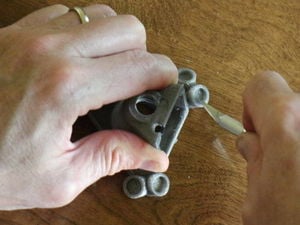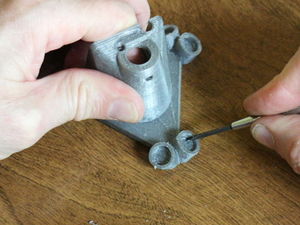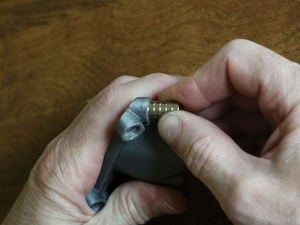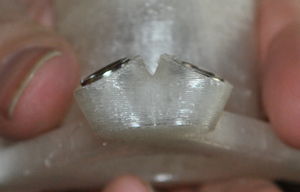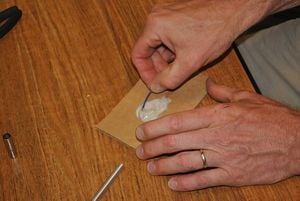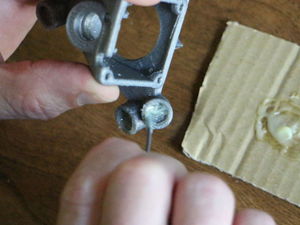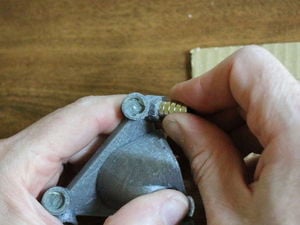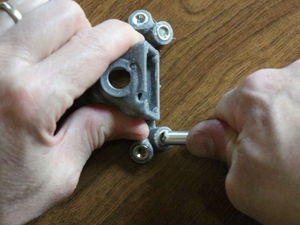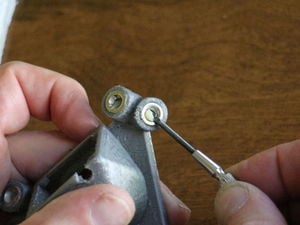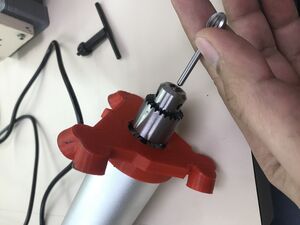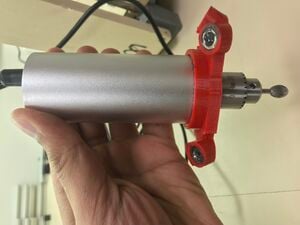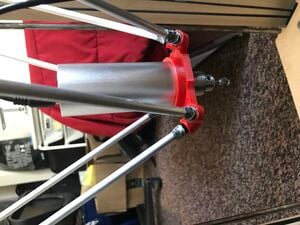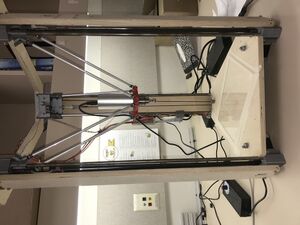
Engraver mod on the Athena II printer allows you to engrave various designs on acrylic sheets, plexiglass, cardboard and/or wooden surfaces. You could also use the same motor and set up and just change the tool bits to drill or ream a hole precisely. There were different steps involved to successfully install the engraver mod on the Athena II. Detailed procedure and steps are listed below.
Printing[edit | edit source]
- Download this stl file Modified End Effector for the modified end effector that will be able to hold the motor.
- Print the end effector
Freecad file, incase you want to modify anything > File:Modified end effector.FCStd
Print Settings[edit | edit source]
- Material used = PLA
- Layer Height = 0.2mm
- no. of top/bottom layers = 4
- Infill = 100% (you could give around 60-70 % to minimize the material)
- Printing Temperature = 210 C
- Speed = 80 mm/s
- No supports
Bill of Materials[edit | edit source]
Follow the link in the 'where you could find column' to see pictures.
| Description | Count | Where you could find |
|---|---|---|
| 3D-Printed end effector | 1 | Download stl |
| Neodymium Ring Magnets (3/8" od x 1/8" thick with countersunk hole) | 6 | KJ magnetics |
| Adjustable Micro Mini Electric Hand Drill with Power Supply Control | 1 | the one I used |
| Left over epoxy from the time you built Athena II | 1 | if you need new one |
Tools needed[edit | edit source]
| S.No | Description | Where you could find |
|---|---|---|
| 1 | MOST Delta RepRap or similar RepRap 3-D printer | |
| 2 | Precision Knife | Local Hardware store or Walmart |
| 3 | Tool to tighten the chuck on the motor 
|
included with the micro mini electric hand drill that you ordered from amazon |
| 4 | Dremel engraving cutter tool bit 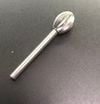
|
Hardware store. You can also use this |
| 5 | Card board and a small piece of wire (to mix and coat epoxy) 
|
anywhere |
Skills and Knowledge Necessary[edit | edit source]
- Freecad or CAD experience to modify or re-design the end effector.
- Knowledge of settings in Cura and settings in Franklin will help tweak few things.
- 3D Printing.
Assembly, Calibration and Cura Instructions[edit | edit source]
Assembly[edit | edit source]
Finish Printing the modified end effector from the above Printing step.
Steps 3 to 11 will be familiar to you if you built your Athena II yourself. If you bought an already built Athena II, follow the steps below carefully.The end effector depicted in the images is the original one. It is NOT our modified end effector. But the steps that involve cleaning magnet holes and inserting magnets work exactly the same.
Clean the magnet pocket sides with a sharp knife, Do not over dress the pockets - magnets should fit snugly!. Use a small flat blade screwdriver to clean protrusions off the bottoms of the pockets - it's important that the magnets seat fully in them. Be careful to not remove too much material as the magnets should fit snugly in them. Clean all of the pockets in the end effector.
The magnets come in pairs with pairs being identified as those attracted to each others' same face, that is the sides with the larger diameter recesses should attract each other. Magnets should be placed in the end effector such that nearest-neighbors attract rather than repel. Magnets may be placed in the carriages without regard for polarity.
Magnets are placed in their pockets with the larger diameter opening facing outward. This is the surface that mates with the ball bearing on the end of a tie rod.
Test fit the magnets in each of their pockets - they should fit snugly and all should fit flatly against the bottom of their pockets. Use the stack of magnets to insert and remove the end magnet during testing fitting. Do not let the magnets slam together!
Calibration[edit | edit source]
- If you own an Athena II, you would already be aware of the basic calibration process, irrespective of whether you built it yourself or not.
- But if you are new, please use this link. Go to section 2.3 on this page
- Your printer is now calibrated for the Hot End.
- Now that you know the hot end effector calibration process, let's move on to calibrating the motor end effector.
- Remove the mirror and attach a engravable surface like acrylic sheet or a thin wooden plank of appropriate dimensions that suit the printer.
- Make sure the "Show Setup" checkbox is checked.
- Scroll to bottom of the page to show the printer control buttons.
- Click the "Home" button.
- Select the Z position text box (immediately below Z (mm)).
- Enter 10 in the Z position box (or leave it empty) and click Enter on the keyboard. The end effector should move down to approximately 10mm from the build platform.
- Now leaving the cursor in the Z position box, click the Page Down button so that the motor end effector is lowered step by step close to the mirror. Use Page Down or shift+down arrow as necessary to make sure the engravable surface is not damaged.
- When the engraving tool attached to motor, touches the engraving surface, type 0 in the Z position box. The engraving tool will be pressed hard against the engravable surface.
- We basically set the Z position to 0 for our motor end without damaging the engravable surface.
- Now, please follow the steps 6 till 23 from section 2.3 Calibration on this page. Rest of Calibration Note: where ever it is mentioned that paper should move freely with little resistance, make sure that it doesn't move at all. This will cause successful and clean engraving for us.
- Now your printer is calibrated to accomodate the modified motor end effector.
- Note: you may need to repeat the steps above multiple times to achieve close to perfect calibration.
- I personally calibrated at-least 10 times.
Cura Instructions[edit | edit source]
- Since we are not using the hot end, set the printing temperature to 25 C or room temperature. You are eliminating the heating step.
- **Important** set all the print speeds to 8 mm/s or lower. This is the speed that I determined will be safe for connecting rods not to disconnect.
- Ignore all other paramters because you are not 3D-printing. Two most important things are step 1 and step 2.
- Scale your model down in the z direction if your slicer permits.
- Generally designing your engraving pattern with just 2mm in the z-direction will help.
- Make sure that the print speed on Franklin is 8mm/s or lower.
- Generate a gcode file to upload on Franklin and start engraving.
Before starting to Engrave-
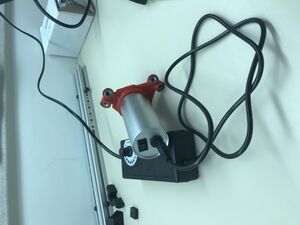
- Attach the power cord from an outlet to the motor.
- You can control the rpm of the motor using the regulator.
- You can improve the resolution of your engraving, using appropriate rpm.
Future Work[edit | edit source]
- The calibration process is time consuming and frustrating. So, automatic calibration could be designed using auto bed leveling.
- Since our engraving tool has to be in contact with our engravable surface, a spring mechanism can be integrated into the end effector - motor set up such that the tool is always in contact with the plexiglass/wood.
Cost of the Mod[edit | edit source]
- Adjustable Micro Mini Electric Hand Drill with Power Supply Control - $30
- 3D-Printed end effector - $0.60 (for filament at $23/Kg)
- Magnets -$7.25
- Dremel tool - $2
- Total cost - $40
